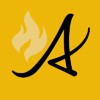
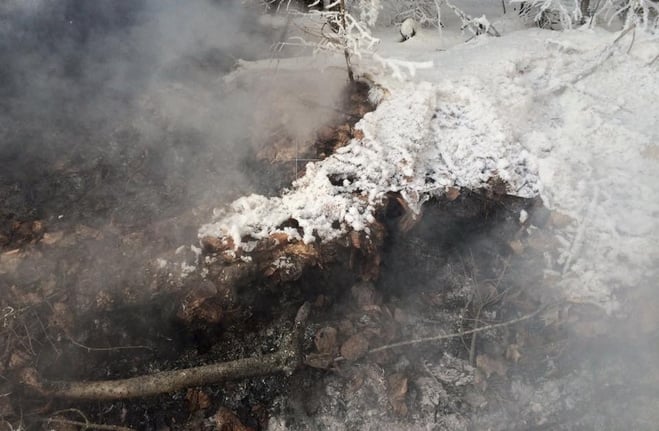
October 31st marks the end of the 2015 wildfire season. Although the current wildfire hazard is LOW we are heading into the winter under very dry conditions. The dry conditions are favorable for holdover fires. A holdover fire is a fire that has been left smoldering, continues to burn deep under ground all winter long and re-emerges as a wildfire in the spring. Prevent spring wildfires by making sure your fall and winter fires are extinguished!

Wildfire Hazard
Cool and wet weather has brought relief to the wildfire hazard in the Slave Lake Wildfire Management Area. Although the current wildfire hazard is LOW we are heading into the winter under very dry conditions. The dry conditions are favorable for holdover fires.
2015 Wildfire Season
October 31st marks the end of an extremely busy wildfire season for firefighters. In the Slave Lake Wildfire Management Area we had 257 wildfires that burned 22,416.89 hectares. Of the 257 wildfires 102 were caused by human activity, 151 were caused by lightning and 5 remain under investigation. Alberta recorded a total 1,785 wildfires that burned 492,390.89 hectares.
For information on wildfires in Alberta download the free Alberta Wildfire App or visit the Wildfire Status Map by clicking here.
Fire Permits
October 31st marks the end of the wildfire season. Fire permits are no longer required however you are still responsible for any fires you ignite this fall and winter.
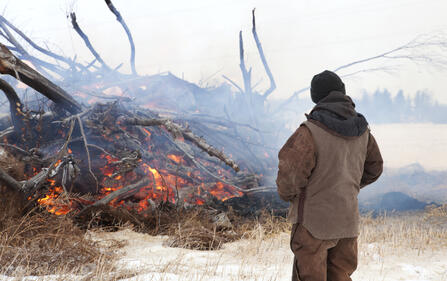
Winter Burning Tips
Brush pile burning
- Burn when there is snow cover and the ground is frozen.
- Never burn when winds are greater than 12 km per hour.
- Avoid building piles in muskeg areas.
- Set only the fires that can be controlled at all times by available manpower and equipment.
- Ensure that piles are at least 25 meters from trees and structures.
- Build a 15 meter wide bare mineral soil guard around all windrows.
Land clearing
- Burn when there is snow cover and the ground is frozen.
- Never burn when winds are greater than 12 km per hour.
- Set only the fires that can be controlled at all times by available manpower and equipment.
- Use a brush rake or excavator to build piles.
- Eliminate dirt from the roots, and pack the windrows as tight as possible.
- Build windrows across the direction of the prevailing winds.
- Ensure that windrows are not longer than 60 meters.
- Ensure that there is at least an 8 meter break between windrows.
- Ensure that all windrows are at least 25 meters from trees and structures.
- Build a 15 meter wide bare mineral soil guard around all windrows.
Extinguishing piles and windrows
- Check on burning frequently.
- Re-pile unburnt and burn again.
- Before spring, go back and check your winter burns. A fire can burn under the snow all winter long, only to come back to life on a windy spring day. Go back and extinguish any hotspots.
- Walk the burn area.
- Roll the debris over to check for hotspots.
- Probe the burned area to ensure there are no smouldering fires in the ground.
- Stir the debris and water down hot spots.
Prevent Wildfires
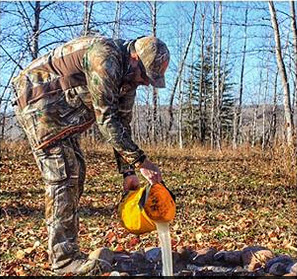
A wildfire at this time of year is 100 per cent preventable. Most if not all of the wildfires we see at this time of year are human-caused. Human-caused wildfires are 100 per cent preventable. Please do your part to prevent wildfires!
While the risk of starting a wildfire maybe low, holdover fires can happen. Holdover fires or ground fires often start during the fall and winter months as a result of improperly extinguished fires. This type of fire burns without smoke or flame and smolders underground over the winter. In the spring as snow melts and dry fuels become abundant, a little windy weather can set a blaze early in the wildfire season.
To avoid accidentally starting a holdover fire, it's important to check all burn areas to ensure they are out. To properly extinguish a fire, completely soak the area with water, stir up the ashes and soak the area again. Always check for hot spots around your fall and winter burn sites. Feel for heat in the spring and times of dry windy weather. To report a wildfire call 310-FIRE (3473)
Stocking up on firewood for the winter?
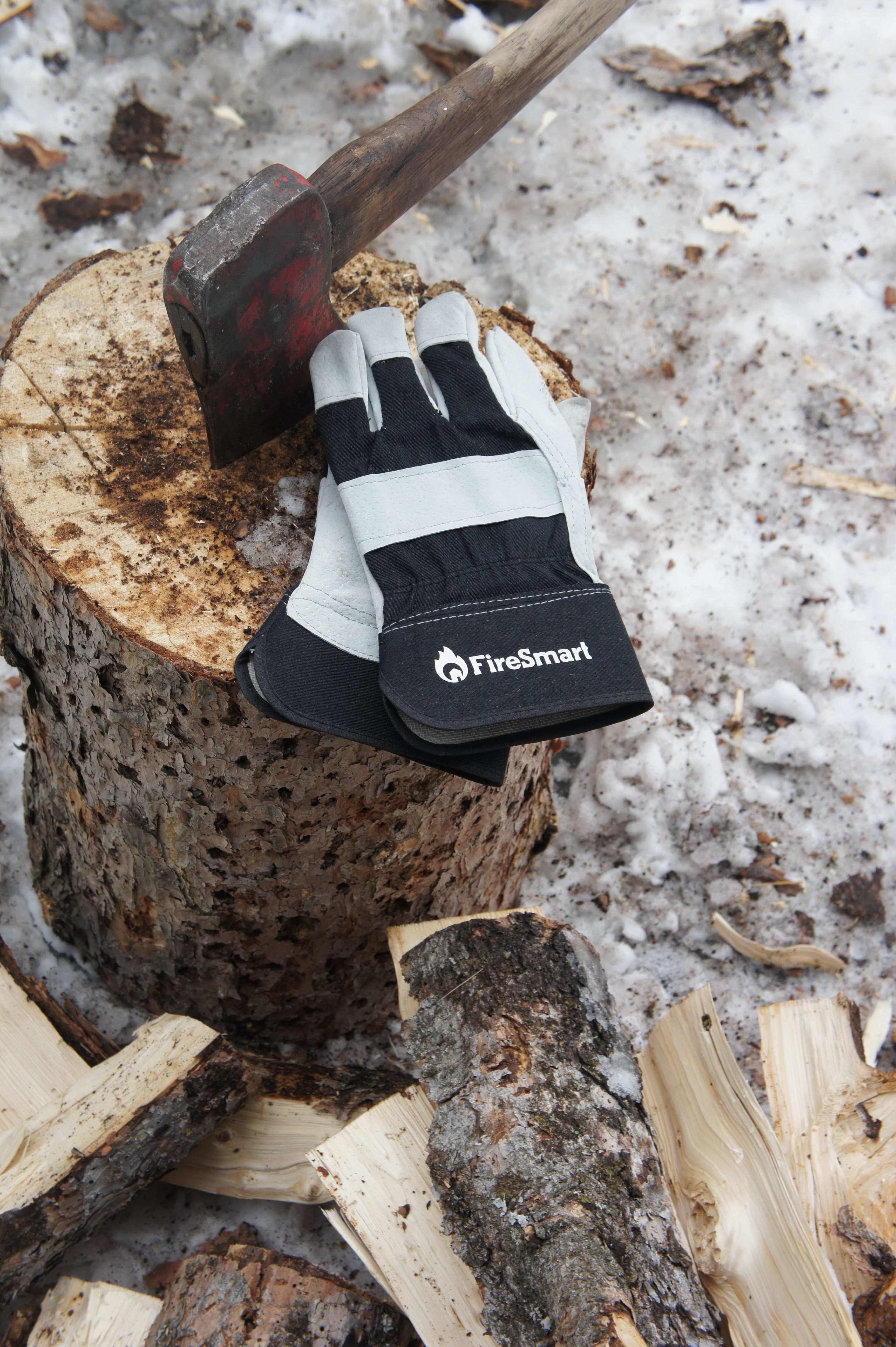
Make sure to store your firewood at least 10 meters away from your home. Visit www.firesmartcanada.ca for more tips on how you can significantly reduce the risk of wildfire around your home or property.
Thanks for doing your part to prevent wildfires!


Unless conditions change, you can expect your next wildfire update on March 1st 2016.
Leah Lovequist -Wildfire Information Officer
Mobile: 780.849.0945
Leah.Lovequist@gov.ab.ca
Report Wildfires 310-FIRE (3743)
